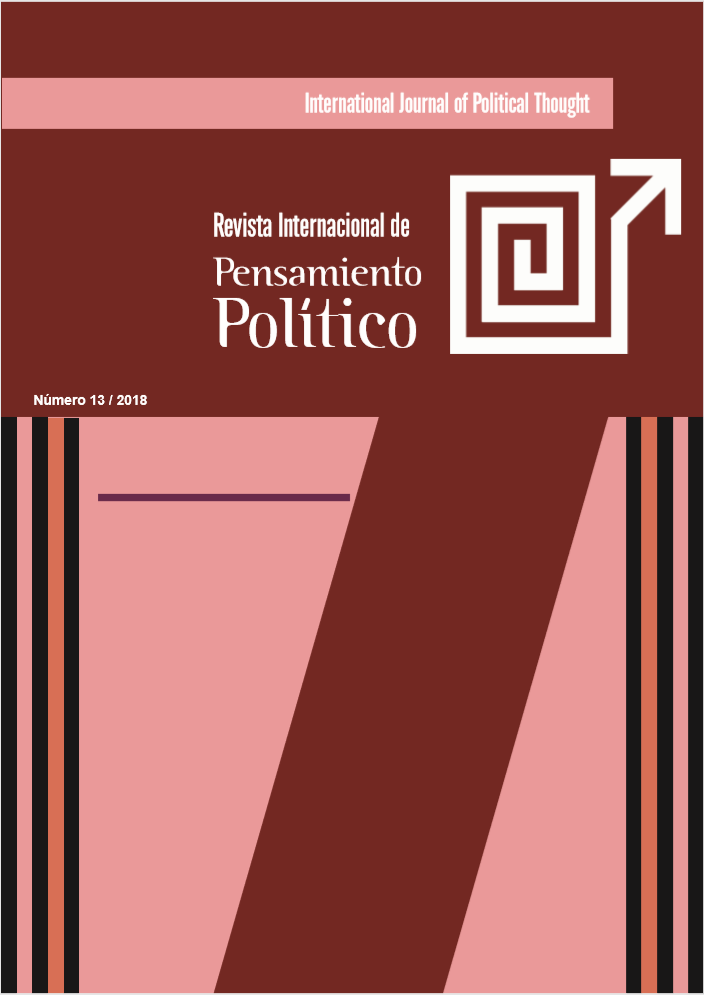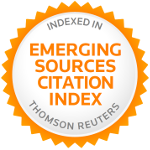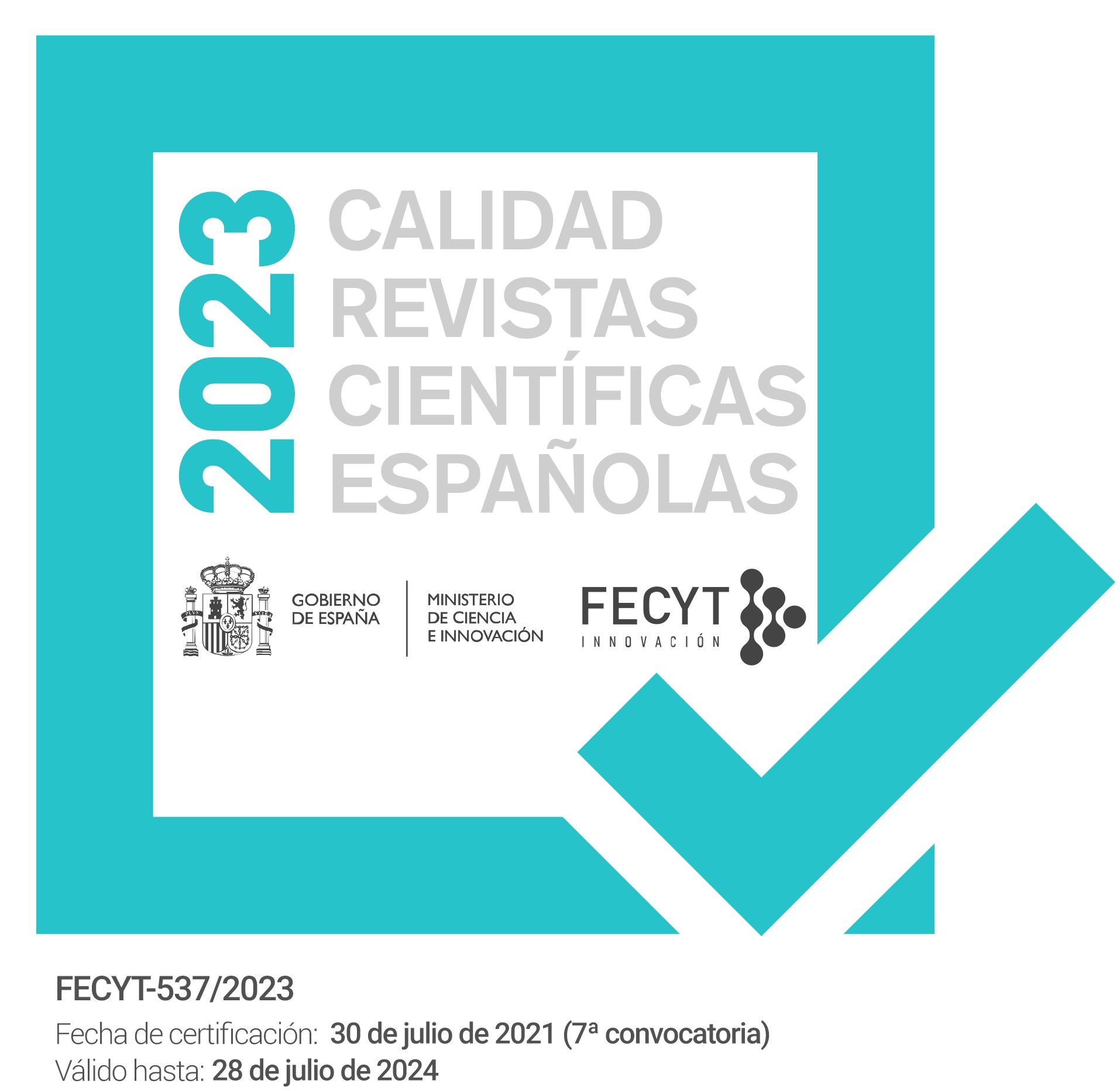Los derechos de propiedad de la mujer en la región MENA
DOI:
https://doi.org/10.46661/revintpensampolit.4088Palabras clave:
MENA, Mujer, derechos de propiedad, propiedad , obstáculos jurídicosResumen
El presente artículo se propone analizar la situación de los derechos de propiedad de las mujeres en la región MENA con base en una definición global de los derechos de propiedad. Pone de relieve los obstáculos, principalmente jurídicos, que limitan el acceso de la mujer a la propiedad, reflexiona sobre la manera a través de la cual dichos obstáculos interaccionan entre sí y propone acciones de mejora.
Descargas
Citas
Alchian A. (2008) Property Rights. Liberty Fund: Library of Economics & Libert. Retrieved from, http://www.econlib.org/library/Enc/PropertyRights.html
Bush R. (2004) Civil Society and the Uncivil State Land Tenure Reform in Egypt and the Crisis of Rural Livelihoods. United Nations Research Institute for Social Development: Switzerland
Center On Housing Rights and EvictionsCOHRE (2006) In Search of Equality. A survey of law and practice related to women’s inheritance rights in the Middle East and North Africa (MENA) Region. Geneva, Switzerland
Department of Statistics [Jordan] and ICF International (2013) Jordan Population and Family Health Survey 2012. Calverton, Maryland, USA: Department of Statistics and ICF International https://dhsprogram.com/pubs/pdf/FR282/FR282.pdf
Deutsche Gesellschaft für Internationale Zusammenarbeit Germany -GIZ(2014). Retrieved from, https://www.giz.de/en/downloads/giz2014-en-regional-youth-savingsinitiative.pdf
Food and Agriculture Organization of the United Nations -FAO(2018) Gender and Land Rights Database. Retrieved from, http://www.fao.org/gender-landrights-database
Gwartney J., Lawson R. & Hall J. (2018) Economic Freedom of the World: 2018 Annual Report. Canada: Fraser Institute
Gwartney J., Lawson R. & Hall J. (2014) Economic Freedom of the World: 2014 Annual Report. Canada: Fraser Institute
Hacettepe University Institute of Population Studies (2003) Turkey Demographic and Health Survey, 2003. Hacettepe University Institute of Population Studies, Ministry of Health General Directorate of Mother and Child Health and Family Planning, State Planning Organization and European Union. Ankara, Turkey (http://dhsprogram.com/pubs/pdf/FR160/FR160.pdf)
Haut Commissariat au Plan HCP -Morocco(2016) La Femme Marocaine en Chiffres [Moroccan Women in Numbers] Haut Commissariat au Plan: Rabat
International Monetary FundIMF (2013), Arab Policy Forum on Financial Inclusion: Addressing Challenges of Financial Inclusion in the Arab WorldA speech by Masood Ahmed. Retrieved from, http://www.imf.org/external/np/speeches/2013/121013.htm
Locke J., Of Property, Book II Chapter 5.
Making Finance Work for Africa-MFW4A(2018) Gender and Finance. Retrieved from, http://www.mfw4a.org/gender-and-finance/gender-and-finance.html
Ministry of the Interior (2012) Ethnic Collectivities and Collective Land, Retrieved from http://www.terrescollectives.ma/Pages/ar/question-femme.cshtml
Ministry of Public Health and Population (MOPHP), Central Statistical Organization (CSO) [Yemen], Pan Arab Program for Family Health (PAPFAM), and ICF International (2015). Yemen National Health and Demographic Survey 2013. Rockville, Maryland, USA: MOPHP, CSO, PAPFAM, and ICF International. https://dhsprogram.com/pubs/pdf/FR296/FR296.pdf
O’Driscoll Jr & Hoskins (2003) Property Rights: The Key to Economic Development. Policy Analysis No. 482, Cato Institute: Washington DC
Property Rights Alliance (2015) International Property Rights IndexGender (IPRI-GE). Unpublished data retrieved directly from the Organization
Rockefeller Foundation (2013) Decision Intelligence Document Women’s Insecure Property Rights. Retrieved from, https://www.rockefellerfoundation.org/app/uploads/Womens-Insecure-PropertyRights.pdf
UNESCO Institute for Statistics (2012 ) Adult and Youth Literacy, 1990-2015: Analysis of data for 41 selected countries. Canada: UNESCO Institute for Statistics
World Bank (2011) World Development Report 2012: Gender Equality and Development. Washington, DC: World Bank.
World Bank (2012) SMEs for Job Creation in the Arab World: Access to Financial Services. Washington, DC: World Bank.
World Bank (2013a) Jordan Country Gender Assessment: Economic Participation, Agency and Access to Justice in Jordan. Report No. ACS5158. Washington, DC: The World Bank.
World Bank (2013b) Opening Doors: Gender Equality and Development in the Middle East and North Africa. MENA Development Report. Washington, DC: World Bank.
World Bank (2013c) Projet de Renforcement de la Micro-Finance chez les Femmes et les Jeunes dans la Région MENA [Project to strengthen microfinance for women and youth in the MENA region] Retrieved from, http://wwwwds.worldbank.org/external/default/WDSContentServer/WDSP/IB/2013/10/17/000333037_20131017105424/Rendered/PDF/787450PJPR0P140Box0 379848B00PUBLIC0.pdf
World Bank (2013d) Jobs for Shared Prosperity: Time for Action in the Middle East and North Africa. Washington, DC: World Bank.
World Bank (2014) Expanding Women’s Access to Financial Services. Retrieved from, http://www.worldbank.org/en/ results/2013/04/01/banking-on-womenextending-womens-access-to-financialservices
World Bank (2018) Women, Business & the Law 2018. Retrieved from, https://wbl. worldbank.org/
Descargas
Publicado
Cómo citar
Número
Sección
Licencia

Esta obra está bajo una licencia internacional Creative Commons Atribución-NoComercial-CompartirIgual 4.0.
Política de acceso abierto
Se permite el acceso libre y abierto de cualquier interesado a todos los contenidos de los números de la revista, sin costo alguno, pudiendo imprimir y trasladar todos los artículos, con la única condición de precisar la fuente y la autoría.
La revista: a) no cobra a las autorías costes por el procesamiento de los artículos ni por el envío de los mismos, b) mantiene el copyright para los autores sin restricciones, c) facilita a los autores conservar sus derechos de publicación sin limitaciones.
La Revista Internacional de Pensamiento Político es una obra original del Laboratorio de Ideas y Prácticas Políticas de la Universidad Pablo de Olavide. Todos los artículos incluidos en la Revista son obra original de sus respectivas autorías. Esta Revista se ofrece libremente a la comunidad científica y académica sin coste alguno y libera los contenidos de acuerdo a la licencia "Reconocimiento-NoComercial-CompartirIgual 4.0 CC BY-NC-SA" del proyecto Creative Commons dispuesta en la siguiente url: https://creativecommons.org/licenses/by-nc-sa/4.0/legalcode
Si deseas traducir o compilar alguno de los artículos aquí disponibles, por favor, ponte en contacto









 Universidad Pablo de Olavide
Universidad Pablo de Olavide


